Science & Technology
/Knowledge

State's new law involving PSE aspires to set a course for the future
SEATTLE —Over the past couple of years, Washington lawmakers have wrestled with a daunting task.
The problem: The state's largest utility, Puget Sound Energy, sells natural gas to nearly 1 million customers and burns gas and coal to electrify cities. That contributes millions of metric tons of planet-warming gases to the atmosphere.
It makes...Read more
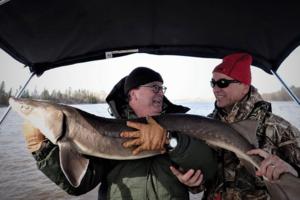
Wildlife agency: Sturgeon won't go on endangered species list
Fishing for lake sturgeon in Minnesota, Wisconsin and Michigan is not a threat to the ancient species, the U.S. Fish and Wildlife Service concluded in its decision not to list the giant fish under the Endangered Species Act.
Monday's ruling after a yearlong review ends the possibility the largest freshwater fish in North America will be put off...Read more
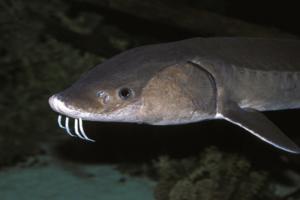
ENV-STURGEON // Wildlife agency: Sturgeon won't go on endangered species list
Fishing for lake sturgeon in Minnesota, Wisconsin and Michigan is not a threat to the ancient species, the U.S. Fish and Wildlife Service concluded in its decision not to list the giant fish under the Endangered Species Act.
Monday's ruling after a yearlong review ends the possibility the largest freshwater fish in North America will be put off...Read more

Maryland Gov. Wes Moore issues executive order calling for environmental literacy
BALTIMORE — Gov. Wes Moore issued an executive order Monday establishing an environmental literacy program in an effort to empower Maryland youth to conserve and restore the state’s natural resources in the face of climate change.
“We owe it to the people of Maryland to keep our drinking water clean, keep our air safe, and preserve our ...Read more

Florida plans $850 million in Everglades restoration projects in next year
WEST PALM BEACH, Fla. — Florida officials and environmental advocates on Monday touted major progress toward Everglades restoration, which has been advanced by dozens of state-funded projects.
The state has pumped billions of dollars into the effort, as the gusher of tax money flowing into state government in recent years has helped fund a ...Read more

'The definition of poaching': Conspiracy alleged after group hunted dozens of deer in California
SACRAMENTO — A group of Nevada County residents are facing charges in what hunting experts are calling one California’s largest deer poaching cases in years. Brought by District Attorney Jesse Wilson, six individuals allegedly conspired to commit several hunting crimes.
Led by one man, the complaint alleges that the group drove around at ...Read more

Why don’t female crickets chirp?
Curious Kids is a series for children of all ages. If you have a question you’d like an expert to answer, send it to curiouskidsus@theconversation.com.
Why don’t female crickets chirp? – Avery, age 8, Los Angeles
Insects communicate in lots of different ways, for many reasons. Some, such as butterflies and beetles, use ...Read more

Wind and solar in limbo: Long waitlists to get on the grid are a 'leading barrier'
Ninety miles west of Chicago, the corn and soybean fields stretch to the sky, and dreams of the clean energy future dangle — just out of reach.
To the east of Route 52, there’s the first phase of the 9,500-acre Steward Creek solar farm, in the works since 2019.
To the west, there’s South Dixon Solar, which once hoped to begin ...Read more

Native village proposes new option for restoring Eklutna River
As Southcentral Alaska electric utilities push forward with a much-contested plan to reduce the impacts of a hydroelectric project on fish and wildlife, the Native Village of Eklutna is proposing an alternative option to restore water to the full length of Eklutna River.
The Chugach and Matanuska electric associations and Anchorage's hydropower...Read more

Minnesota House lawmakers push forward fertilizer tax to clean up contaminated wells
Minnesota would tax farmers $0.40 per ton of fertilizer to help test and clean up thousands of private wells contaminated with agricultural runoff under a bill that cleared the House's main agricultural committee.
The proposed tax is smaller than earlier versions that had called for charging up to $0.99 per ton in the first year and escalating ...Read more
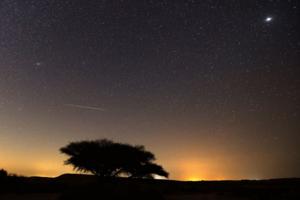
Meteor shower to peak soon. Here's when and the best way to watch
One of the oldest known meteor showers is streaking through the sky above California.
The Lyrid meteor shower was first recorded in 687 B.C. and has been studied for more than 2,000 years, according to NASA.
The meteor shower occurs every April, peaking this year on Monday.
Here’s the best way to catch a glimpse of this celestial event.
...Read more

Mojave desert tortoise officially joins California's endangered list
The California Fish and Game Commission has formally recognized the Mojave desert tortoise as endangered.
The designation, granted Thursday, is the latest in a long series of steps to try to protect the dwindling population of the desert creature, which biologists say is heading toward extinction.
The tortoise was designated as threatened ...Read more
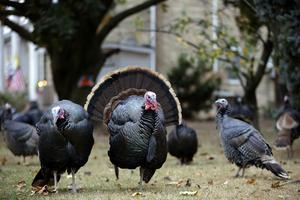
Wild turkey numbers are falling in some parts of the US – the main reason may be habitat loss
Birdsong is a welcome sign of spring, but robins and cardinals aren’t the only birds showing off for breeding season. In many parts of North America, you’re likely to encounter male wild turkeys, puffed up like beach balls and with their tails fanned out, aggressively strutting through woods and parks or stopping traffic on your street....Read more
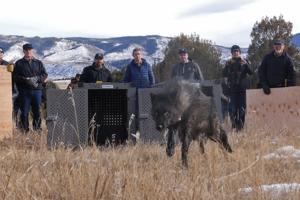
Reintroduced wolves kill 4 yearling cattle in latest of string of livestock attacks in Colorado
DENVER — Wolves killed several yearling cattle in north-central Colorado this week, bringing the total number of wolf kills of livestock this month to six.
Colorado Parks and Wildlife on Thursday confirmed that wolves killed three yearlings on a Grand County ranch between Monday night and Tuesday morning. The carcasses were discovered ...Read more

Groundbreaking discovery: Astronomers find largest black hole in Milky Way
Astronomers have discovered the largest known stellar black hole in the Milky Way, according to a European Space Agency news release.
Named Gaia BH3, it was found by chance when the space agency’s Gaia mission team was combing through data. With a mass 33 times that of the sun, BH3 surpasses the previous record holder, Cyg X-1, which is about...Read more

Planned 'mass execution' of geese in Conn. city paused after outpouring of passionate input on both sides
HARTFORD, Conn. — Tears, shouts and interruptions marked residents’ comments Wednesday night over a proposal to exterminate geese in Bristol, Conn., parks.
As the city’s Board of Parks considered a proposal to kill resident geese that are causing excessive waste that is marring Veterans Memorial Park, dozens of residents shared ...Read more
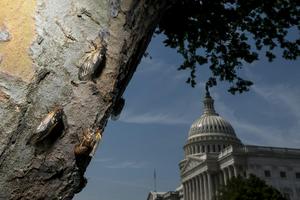
Billions of cicadas are about to emerge from underground in a rare double-brood convergence
In the wake of North America’s recent solar eclipse, another historic natural event is on the horizon. From late April through June 2024, the largest brood of 13-year cicadas, known as Brood XIX, will co-emerge with a midwestern brood of 17-year cicadas, Brood XIII.
This event will affect 17 states, from Maryland west to Iowa and ...Read more
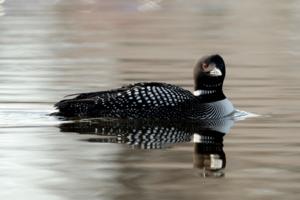
Fewer loon chicks surviving because of climate change, researchers say
For three decades, David Johnson has guided nature lovers in early spring to northern Illinois lakes to hear the eerie yodeling of hundreds of common loons.
Within the next 30 years, however, there may be few if any migrating loons in Illinois, according to Walter Piper, researcher and professor of biology at Chapman University in Orange, ...Read more

Sealing homes' leaky HVAC systems is a sneaky good climate solution
There's a hidden scourge making homes more harmful to the climate and less comfortable: leaky heating and cooling systems. Plugging those leaks may be the dull stepchild of the energy transition, but that doesn't make it any less important than installing dazzling solar arrays and getting millions of electric vehicles on the road.
The problem,...Read more

LA's water supplies are in good shape. But is the city ready for the next drought?
LOS ANGELES -- California’s second wet winter in a row has left L.A’s water supplies in good shape for at least another year, but the inevitable return to dry conditions could once again put the city’s residents in a precarious position.
After the state’s final snow survey of the season, officials with the Los Angeles Department of ...Read more
Popular Stories
- Why don’t female crickets chirp?
- Wind and solar in limbo: Long waitlists to get on the grid are a 'leading barrier'
- Meteor shower to peak soon. Here's when and the best way to watch
- 'The definition of poaching': Conspiracy alleged after group hunted dozens of deer in California
- Florida plans $850 million in Everglades restoration projects in next year





